The Lord of Abernethy was from the 12th century to the 14th century the hereditary holder of the church and lands of the Scottish monastery at Abernethy. It gradually evolved alongside the title Abbot of Abernethy, displacing that term in extant sources by the end of the 13th century. It was held by the descendants of Gille Míchéil, Earl of Fife.
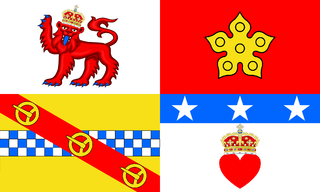
The Mormaer or Earl of Angus was the ruler of the medieval Scottish province of Angus. The title, in the Peerage of Scotland, is held by the Duke of Hamilton, and is used as a courtesy title for the eldest son of the Duke's eldest son.
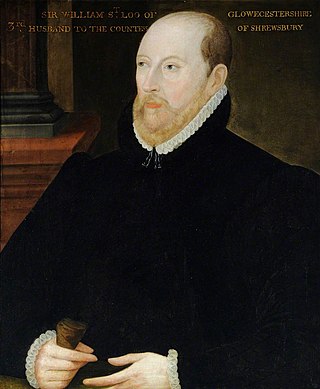
Matthew Stewart, 4th Earl of Lennox was a leader of the Catholic nobility in Scotland. He was the paternal grandfather of King James VI of Scotland. He owned Temple Newsam in Yorkshire, England.

The Earl or Mormaer of Lennox was the ruler of the region of the Lennox in western Scotland. It was first created in the 12th century for David of Scotland, Earl of Huntingdon and later held by the Stewart dynasty.
Stewart of Darnley, also known as the Lennox Stewarts, were a notable Scots family, a branch of the Clan Stewart, who provided the English Stuart monarchs with their male-line Stuart descent, after the reunion of their branch with the royal Scottish branch.

Duke of Aubigny is a title that was created in the Peerage of France in 1684. It was granted by King Louis XIV of France to Louise de Kérouaille, the last mistress of King Charles II of England, and to descend to Charles's illegitimate issue by her, namely to the descendants of Charles Lennox, 1st Duke of Richmond, 1st Duke of Lennox (1672–1723) of Goodwood House in Sussex. Louis XIV also granted her the Château de la Verrerie, a former secondary seat of the Stewart Seigneurs d'Aubigny, Franco-Scottish cousins of the Stewart monarchs, seated from 1422 to 1672 at the Château d'Aubigny in the parish and manor of Aubigny-sur-Nère in the ancient province of Berry in France.
Margaret Stewart, Countess of Angus and Mar was Countess of Angus and Lady of Abernethy in her own right. Her father was Thomas Stewart, 2nd Earl of Angus.
George Douglas, 1st Earl of Angus (1380–1403) was a Scottish nobleman and peer.
Buncle is a Celtic derived surname originating from Bonkyll Castle, Berwickshire, Scotland. It has many modern variations that are phonetically similar, for example: Bonkle, Bonkyll, Bonkill, Bonkylle, Bonkile, Bunkle, Bunkall and Bonckle. The names' meaning is believed to refer to a chapel at the bottom of hill.
George Douglas, 4th Earl of Angus, Lord Douglas, Abernethy and Jedburgh Forest was a Scottish nobleman. He was the son of William Douglas, 2nd Earl of Angus and Margaret Hay of Yester. Known as the Great Earl of Angus. He succeeded to the Earldom following the death of his childless brother James Douglas, 3rd Earl of Angus in 1446. He was to become the first Red Chief of Douglas.
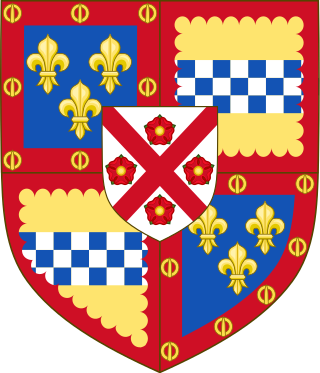
John Stewart, 1st Earl of Lennox was a Scottish earl. He was known as Lord Darnley and later as the Earl of Lennox.

Jean Hepburn, Lady Darnley, Mistress of Caithness, Lady Morham was a Scottish noblewoman and a member of the Border clan of Hepburn. Her brother was James Hepburn, Earl of Bothwell, the third husband of Mary, Queen of Scots. Jean's first husband was John Stewart, 1st Lord Darnley, an illegitimate half-brother of Queen Mary, which made Jean a double sister-in-law of the queen. Jean married three times. She was also Lady of Morham, having received in 1573 the barony of Morham and lands which had belonged to her mother, Lady Agnes Sinclair and was forfeited to the Crown subsequent to her brother, the Earl of Bothwell's attainder for treason.

Bonkyl Church is a Church of Scotland kirk situated at grid reference NT808595 5 miles northeast of Duns in the old county of Berwickshire. The nearest hamlet is Preston just over 2 miles to the south-west.
Alexander de Abernethy was a Scottish baron. He was a son of Hugh de Abernethy and Maria de Ergadia. Alexander was a descendant of abbots of Abernethy; his great-grandfather Laurence, great-grandson of Gillemichael, Earl of Fife, was the first to style himself Lord (dominus) His daughter Margaret married John Stewart of Bonkyll, the new Scottish earl of Angus.

Preston is a small village in the ancient county of Berwickshire, now an administrative area of the Scottish Borders region of Scotland. It lies within the local Abbey St Bathans, Bonkyl & Preston Community Council area.

John Stewart, 1st Earl of Angus, Lord of Bonkyl, jure uxorisLord of Abernethy was a medieval Scottish nobleman.
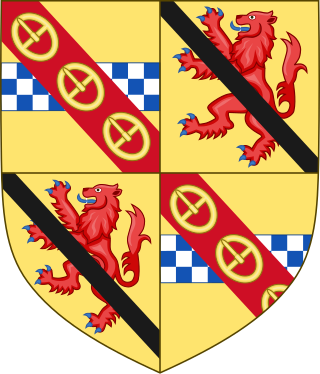
Thomas Stewart, 2nd Earl of Angus (b.b.1331-1361) was a medieval Scottish nobleman.
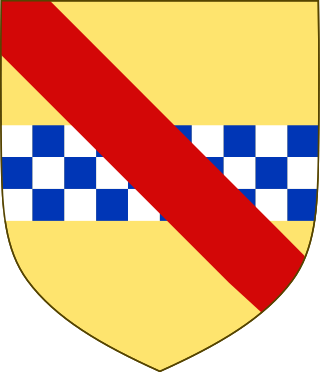
Sir John Stewart, the brother of Sir James the 5th High Steward of Scotland, was a Scottish knight and military commander during the First Scottish War of Independence.

The Cunninghams of Drumquhassle were a family of the landed gentry in Scotland from the early 16th century to the mid-17th. They are linked to the Cunninghams of Kilmaurs in Ayrshire, being descended through junior lines via the Cunninghams of Polmaise. At their greatest extent, their lands included Mugdock-Mitchell and the house at Killermont, covering the part of parishes of Strathblane and New Kilpatrick. John Cunningham, the third laird held several positions of responsibility within the Scottish court, including Master of the Royal Household for James VI and a Collector General of tax during the regency of the Earl of Lennox, but his involvement in the power struggles between the Scottish nobility and the court of Elizabeth I of England also led to his demise and he was executed for treason in 1585. Over the next century, the family lost its land and power – in the mid-17th century, the Cunninghams sold their country house in Drumquhassle in rural Stirlingshire and it passed to the Govane family.
Janet Stewart was a Scottish aristocrat.














